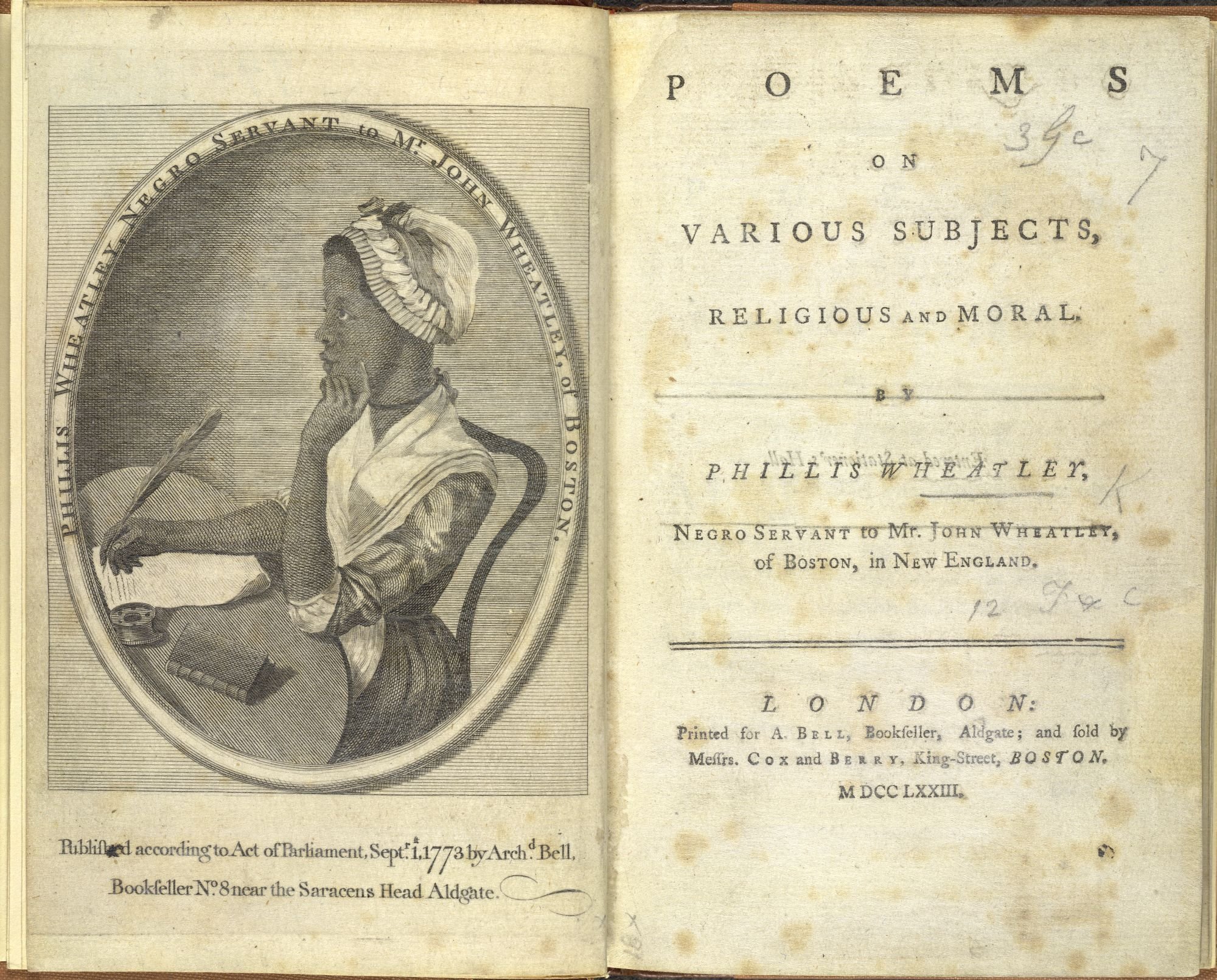Teach This Poem, though developed with a classroom in mind, can be easily adapted for remote learning, hybrid learning models, or in-person classes. Please see our suggestions for how to adapt this lesson for remote or blended learning. We have also noted suggestions when applicable and will continue to add to these suggestions online.
 Phillis Wheatley, Poems on various subjects, religious and moral, 1773, printed book, British Library, London, https://www.bl.uk/collection-items/phillis-wheatleys-poems. This image is in the public domain.
Phillis Wheatley, Poems on various subjects, religious and moral, 1773, printed book, British Library, London, https://www.bl.uk/collection-items/phillis-wheatleys-poems. This image is in the public domain.
-
Warm-up: Look at the image of Phillis Wheatley here. What stands out to you about the image? Look at the title page of the book. What else do you see?
-
Before Reading the Poem: Read Wheatley’s biography here. What surprised you about Wheatley? Why?
-
Reading the Poem: Read the poem “On Being Brought from Africa to America” by Phillis Wheatley silently. What do you notice about the poem? Annotate for any words or phrases that stand out to you or any questions you might have. (Teachers, if you are meeting synchronously, we suggest sharing a video screen that allows for students to annotate together. If you are meeting asynchronously, we suggest asking students to post/share their annotations in your online classroom platform.)
-
Listening to the Poem (enlist two volunteers to read the poem aloud): Listen as the poem is read aloud twice, and write down any additional words and phrases that stand out to you. (Note, the reading of the poem starts at 3:01. Teachers, for synchronous meetings, you could ask two students to read the poem, and for asynchronous meetings, students could read the poem on their own or with a family member.)
-
Small-group Discussion: Share what you noticed in the poem with a small group of students. Based on the details you just shared with your small group, how would you describe the tone of the poem? Why? How do the first four lines compare to the last four lines?
-
Whole-class Discussion: Before discussing the poem, read this short essay about Wheatley’s poem by Camille T. Dungy here. What might the significance of the word “mercy” in the poem be? How is this poem a critique of slavery and/or religion? (Teachers, for synchronous discussions, you can use whole class discussion or break-out rooms. For asynchronous discussions, you might want to ask students to respond in writing. If you feel like your students might need more context, this article here about Phillis Wheatley might be helpful.)
-
Extension for Grades 7-8: Watch or listen to the video of Bob Marley’s “Buffalo Soldier” here. Watch or listen to the video twice. What words or phrases stand out to you? What lines are repeated? How does this song compare to the poem? Write a paragraph comparing the song, or another song of your choice, and the poem. (Teachers, you might also wish to create space on an online platform for students to share and respond to each other’s poems.)
-
Extension for Grades 9-12: Read Eve Ewing’s poem “1773” here, which is a poem honoring Phillis Wheatley. Read the rest of the poems and stories featured in the 1619 project. After reading, research a seminal moment in American history and write a poem or story about that moment. Share with your classmates. (Teachers, you might want to consider creating space on an online platform for students to share their writing and respond to each other’s work.)
“Let’s Talk,” a guide from Teaching Tolerance, a project of the Southern Poverty Law Center, offers teachers tools for facilitating critical conversations with students. Read more.
